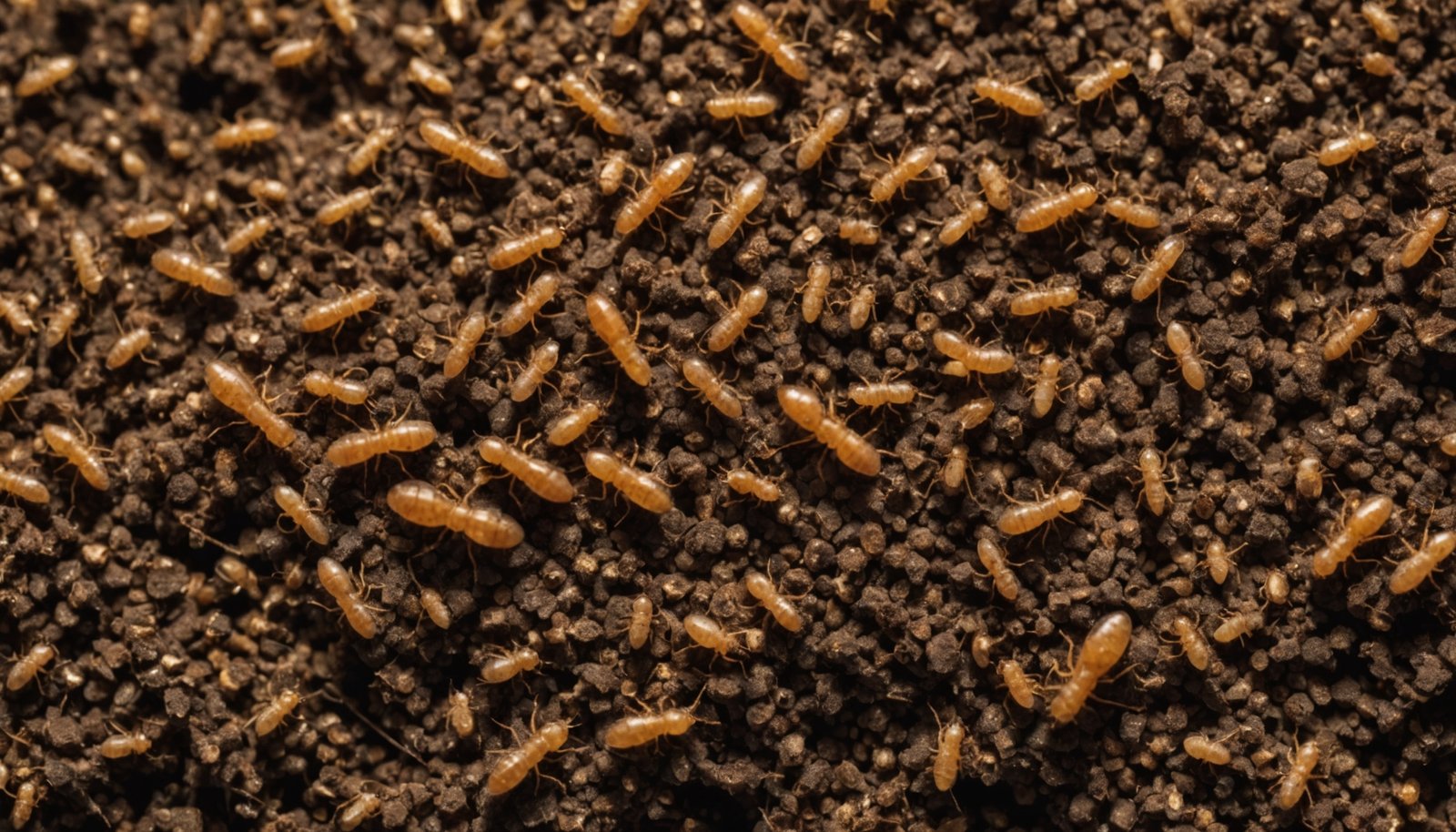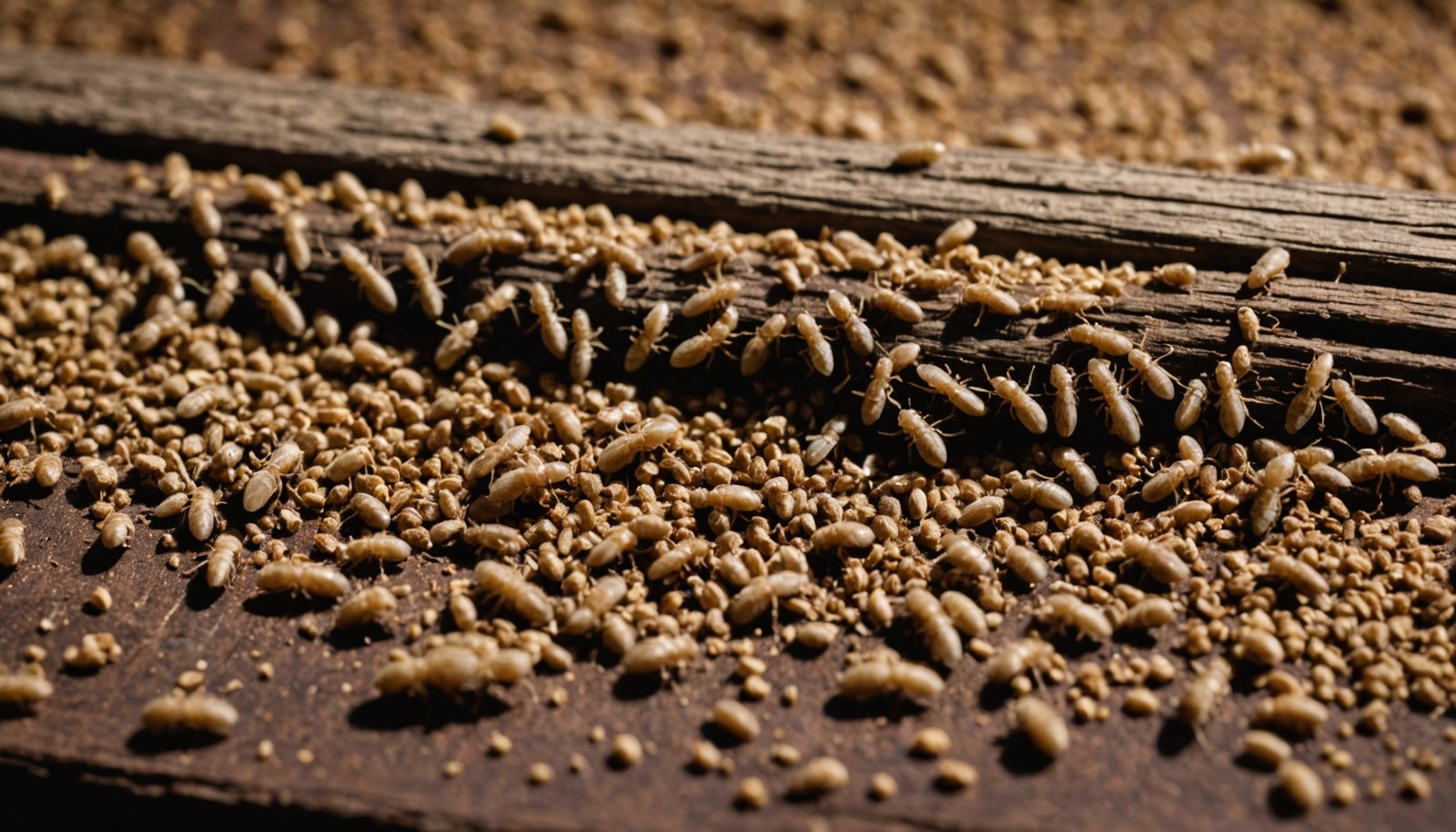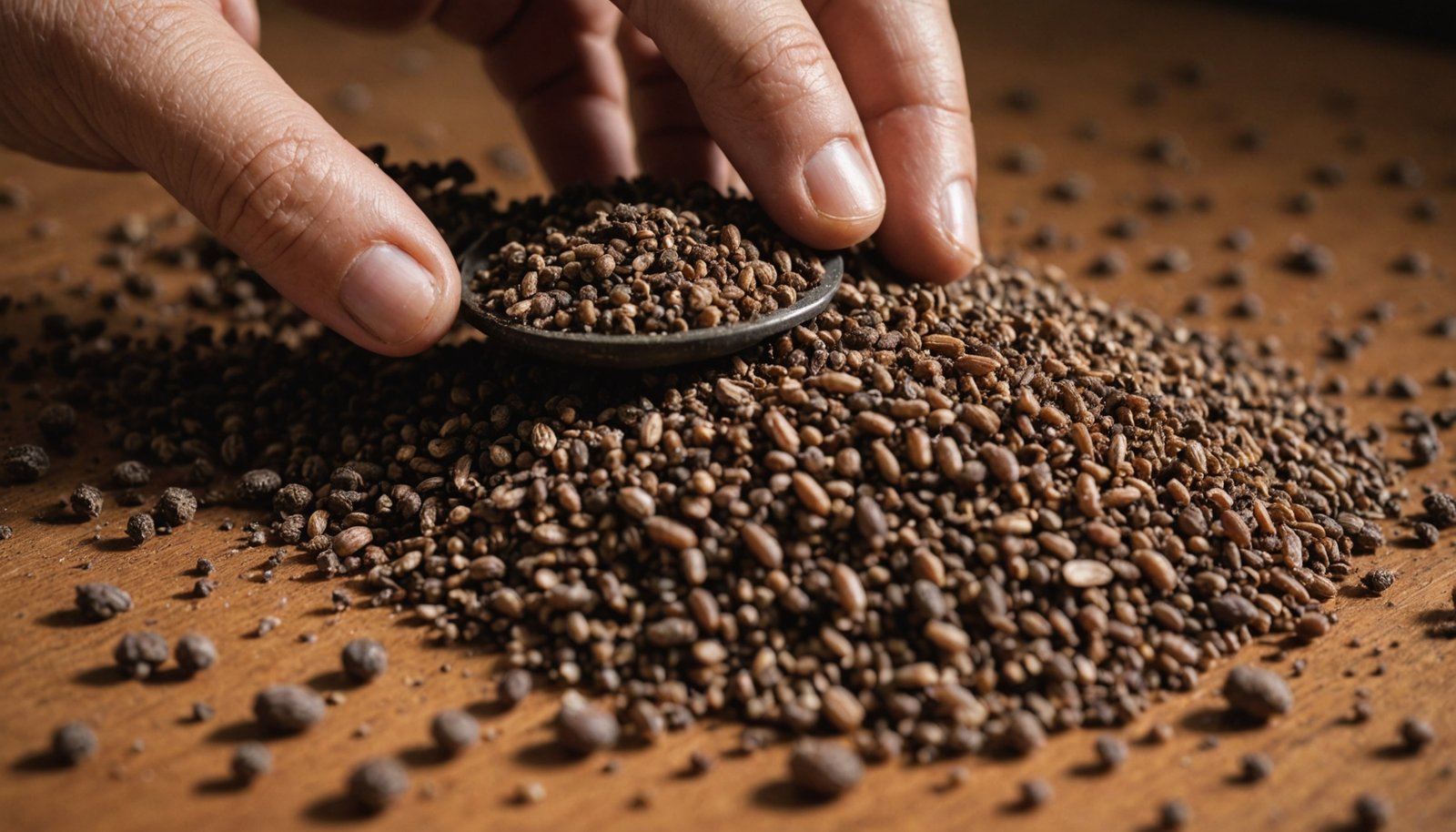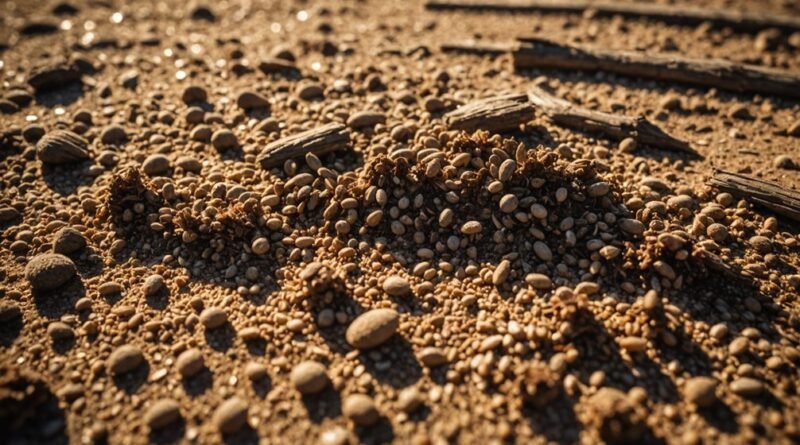Are Termite Droppings Toxic? What Science Really Says
While termite droppings aren’t directly toxic, you shouldn’t ignore them. These pellets contain proteins and particles that can trigger serious respiratory issues, allergic reactions, and skin irritations when they become airborne. The real danger comes from their ability to promote harmful mold growth in damp conditions and release contaminated dust into your indoor air. Understanding the full scope of health risks will help you protect your family more effectively.
Key Takeaways
- Termite droppings contain proteins and particles that can trigger allergic reactions and respiratory issues when inhaled as dust.
- While not directly toxic, exposure to termite frass can cause skin irritation and asthma attacks in sensitive individuals.
- The main health concern stems from moisture-related mold growth associated with termite activity rather than direct toxicity.
- Chemical analysis shows elevated minerals and nutrients in termite droppings, but these components aren’t inherently harmful to humans.
- Scientific evidence indicates termite droppings pose primarily environmental and respiratory risks rather than toxic or poisonous effects.
What Makes Up Termite Droppings?

While termite droppings might look like simple wood particles, they’re actually complex structures composed of several key components. The primary ingredients are lignin and cellulose, with lignin often being more abundant depending on what the termites have eaten.
Termite droppings are more than just wood bits – they’re intricate structures rich in lignin and cellulose from their wooden meals.
You’ll find various hydrocarbons in these droppings, including n-alkanes and dimethylalkanes, along with uric acid and soluble proteins from the termites’ digestive processes. These pellets are distinctive with their six concave sides, formed as waste products during the termites’ wood digestion.
The pellets also contain mineral elements like magnesium, iron, and extractable chloride. Their color can range from cream to nearly black, reflecting the type of wood the termites have consumed rather than the age of the droppings.
The composition varies considerably based on the termites’ diet, with the pellets absorbing pigments and compounds from different wood sources.
The Science Behind Termite Frass Composition

Although termite frass may appear simple, its chemical composition reveals a complex mixture of elements and compounds that differ markedly from the wood source. The chemical analysis shows enriched levels of essential nutrients and unique hydrocarbon profiles that change over time. The nitrogen content in termite frass is approximately double that found in pinewood.
Here’s what science tells us about termite frass composition:
- It contains higher concentrations of calcium, magnesium, potassium, and phosphorus compared to wood, along with elevated levels of micronutrients like boron and zinc.
- The hydrocarbon makeup consists primarily of dimethylalkanes (25-36%) and n-alkanes (23-38%), closely mirroring the termite’s body composition.
- Its chemical signature evolves with age, showing distinct profiles between fresh frass (0-196 days), medium (197-381 days), and old frass (382-690 days), making it possible to track its age through laboratory analysis.
Health Risks and Safety Concerns

The presence of termite frass in your home extends beyond its chemical composition to pose notable health risks.
You’ll face potential respiratory issues if you’re regularly exposed to termite droppings dust, which can trigger asthma attacks and inflammation, especially if you have pre-existing conditions.
Direct contact with termite frass may cause skin irritation and allergic reactions, particularly if you’re sensitive to the proteins found in termite saliva or droppings.
The situation can worsen as termite damage creates damp conditions that promote mold growth, leading to additional health concerns like headaches and fatigue.
If you discover termite activity, you’ll need to address both the infestation and any resulting structural damage promptly.
Remember that pesticide treatments, while necessary, can introduce their own health risks.
Research shows that exposure to termite allergens can increase asthma risk in children, making early intervention crucial.
Indoor Air Quality Impact
Once termite droppings become airborne in your home, they’ll greatly degrade your indoor air quality through multiple pathways. The presence of termite frass creates a cascading effect of air quality issues that can impact your health and comfort.
1. Termite droppings release proteins that trigger allergic reactions and respiratory problems, especially in sensitive individuals, children, and the elderly. These contaminants can accumulate in areas with poor ventilation. You’ll notice symptoms like sneezing, coughing, and itchy eyes.
2. The moisture from termite activity promotes mold growth, releasing harmful spores into your air.
These can cause allergic reactions and, in severe cases, neurological symptoms.
3. Your indoor air becomes contaminated with particulate matter from frass and wood debris, which can aggravate existing conditions like asthma and COPD, particularly when disturbed during cleanup.
Understanding Environmental Effects
Despite their destructive reputation in homes, termite droppings play complex roles in natural ecosystems, creating both beneficial and challenging environmental effects. You’ll find that termites’ droppings enrich soil with nitrogen and phosphorus, promoting vegetation growth and biodiversity. However, their digestive processes also produce methane, a potent greenhouse gas contributing to global warming. Soil porousness increases due to termites’ extensive tunneling activities.
| Environmental Aspect | Positive Impact | Negative Impact |
|---|---|---|
| Soil Quality | Improves fertility | None reported |
| Plant Growth | Increases density | None reported |
| Carbon Storage | Enhanced through lignin | None reported |
| Biodiversity | Supports more species | None reported |
| Atmosphere | None reported | Methane emissions |
The lignin-rich composition of termite droppings offers long-term benefits for soil stability and carbon storage, while their feces foster beneficial bacteria that protect colonies from harmful fungi – a feature that’s made them particularly resistant to biological pest control methods.
Prevention and Professional Treatment Options
Professional prevention and treatment of termite infestations require a multi-faceted approach that combines expert inspection with targeted control methods.
Effective termite control demands comprehensive strategies, blending skilled assessment with precise intervention techniques to ensure lasting protection.
You’ll need certified professionals to conduct thorough inspections using advanced detection tools like infrared and fiber optic devices to accurately identify termite species and assess infestation severity.
- Opt for bait systems that use low-toxicity ingredients to target termites while minimizing environmental impact – they’re effective and safer than widespread chemical treatments.
- Consider physical barriers like metal mesh and mechanical prevention through proper moisture control and regular maintenance.
- If chemical treatments are necessary, professionals can determine the most appropriate solution based on your specific termite species and infestation level.
Conclusion
While termite droppings aren’t directly toxic, you’ll want to address them quickly to protect your health and home. They can trigger allergic reactions and respiratory issues in sensitive individuals. Don’t try to clean large amounts yourself – call a pest control professional who can safely remove the frass and address the underlying infestation. Remember, where there’s frass, there’s likely active termite damage that needs attention.

